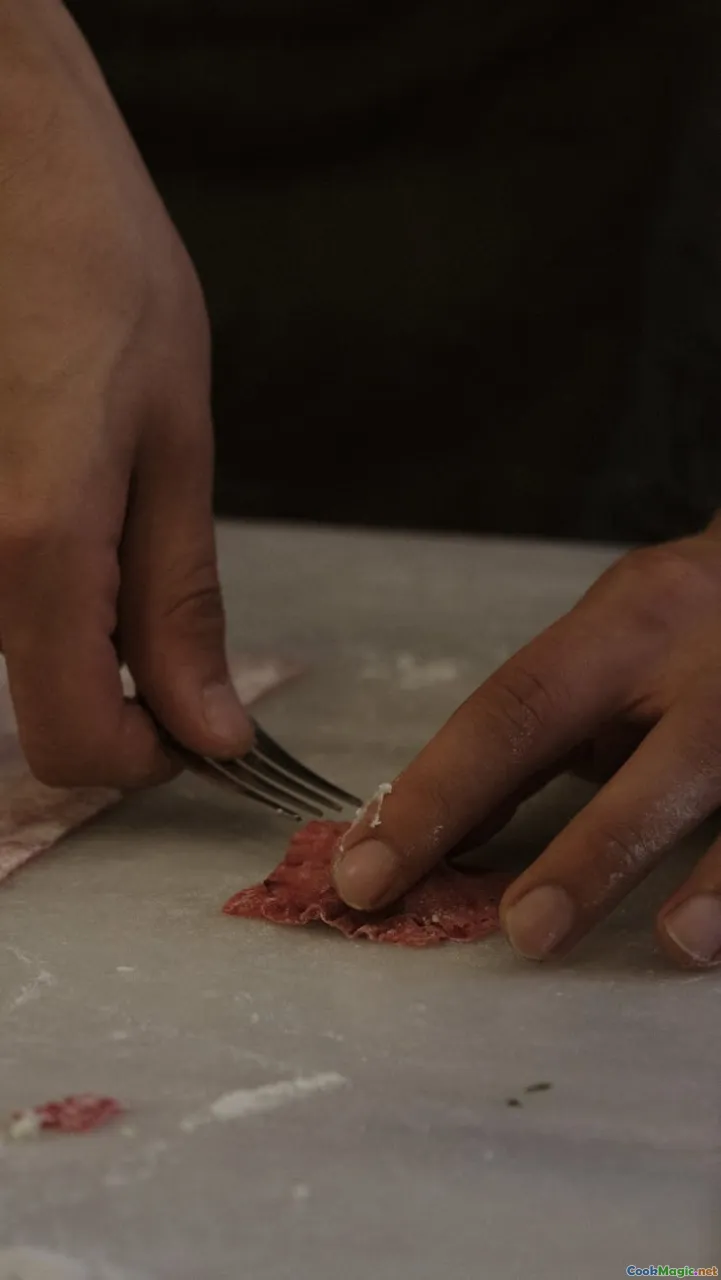Preventing Gummy Pasta in Handmade Ravioli
8 min read Discover expert tips and techniques to prevent gummy texture in handmade ravioli, ensuring perfect, tender bites every time. April 23, 2025 10:55
Preventing Gummy Pasta in Handmade Ravioli
Imagine biting into a perfectly crafted piece of ravioli—delicate, tender, and bursting with flavor. Now, contrast that with the disappointment of biting into a piece of pasta that feels rubbery or gummy, stripping away the joy of what should be a sublime culinary experience. Gummy pasta, especially in handmade ravioli, is a common frustration among home cooks and professional chefs alike, but it’s a challenge that can be conquered with understanding and precision.
In this article, we’ll explore the art and science behind making flawless ravioli, delve into the cultural significance of this iconic Italian dish, and provide practical, expert tips to prevent that undesirable gummy texture. Whether you're a seasoned pasta maker or just beginning your journey into Italian cuisine, mastering these techniques will elevate your homemade ravioli to restaurant-quality standards.
The Cultural and Culinary Significance of Ravioli
Ravioli, with roots stretching back to ancient Italy, embodies the heart of Italian culinary tradition. These small, stuffed pasta parcels are more than just food; they are a celebration of regional ingredients, family recipes, and centuries-old techniques.
In Italy, each region boasts its own variation—ravioli di ricotta e spinaci from Emilia-Romagna, pasta pockets filled with game or cheese in Tuscany, or seafood-stuffed versions along the Ligurian coast. The craftsmanship involved in making ravioli is a labor of love, often passed down through generations.
The texture of perfectly made ravioli is a testament to the skill and patience of the cook. It should be tender yet resilient enough to hold the filling without falling apart, and the pasta dough should be smooth, elastic, and just firm enough to cook to al dente without becoming gummy.
Understanding Gummy Pasta: Causes and Consequences
Gummy pasta in handmade ravioli isn’t just a matter of personal preference—it’s a result of specific culinary missteps or underlying issues. Here are some common causes:
1. Overworking the Dough
Kneading the pasta dough excessively develops too much gluten, resulting in a chewy, rubbery texture. This is particularly problematic if you’re aiming for a delicate, tender bite.
2. Incorrect Flour or Egg Ratio
The type of flour and the ratio of eggs to flour critically influence dough elasticity. Too much egg can make the dough sticky and prone to gummy textures.
3. Insufficient Resting Period
Resting the dough allows gluten to relax, making it more pliable and less prone to toughness. Skipping this step often results in a dense, gummy consistency.
4. Overcooking
Cooking ravioli for too long or at too high a temperature breaks down the starches and proteins, leading to a slimy, gummy surface.
5. Poor Drying or Shaping Techniques
If the ravioli are not properly dried before cooking or are sealed improperly, moisture can cause the pasta to become sticky and gummy.
Step-by-Step Guide to Perfect Ravioli: Techniques to Prevent Gummy Pasta
Achieving the ideal texture requires attention to detail at each stage of pasta-making. Here’s a comprehensive guide:
1. Choosing the Right Flour
Opt for '00' flour, which is finely milled and ideal for delicate pasta. Alternatively, a blend of '00' and semolina flour can add firmness without sacrificing tenderness.
2. Precise Egg and Water Ratios
A typical ratio is about 1 large egg per 100 grams of flour. Adjust slightly based on humidity and flour type. The dough should be firm but pliable, not sticky.
3. Gentle Kneading
Knead the dough just until it comes together and is smooth—about 8-10 minutes. Overworking develops gluten excessively.
4. Rest the Dough Properly
Wrap the dough in plastic wrap and let it rest at room temperature for at least 30 minutes. This relaxes the gluten, making the dough easier to roll thinly and evenly.
5. Rolling Technique
Use a pasta machine or a rolling pin to achieve an even, thin sheet—about 1-2 mm thick. Flouring the surface and dough lightly prevents sticking.
6. Filling and Sealing
Place small spoonfuls of filling at regular intervals, leaving space to seal. Use a brush dipped in water or egg wash to moisten the edges, ensuring a tight seal that prevents moisture seepage.
7. Drying Before Cooking
Let the assembled ravioli rest on a floured surface for 15-20 minutes. This step helps the pasta set and reduces stickiness.
8. Cooking with Care
Cook in boiling salted water for 2-4 minutes, depending on thickness. Fresh pasta cooks quickly—overcooking will make it gummy.
Personal Insights and Tips
In my experience as a passionate home cook and culinary enthusiast, I’ve found that patience and respect for the ingredients are paramount. I recall a time when I hastily assembled a batch of ravioli, rushing through the sealing process. The result was a batch of pasta that felt dense and overly chewy. Since then, I’ve adopted a more mindful approach—resting the dough, using precise measurements, and gently handling each piece.
A tip I swear by is testing one ravioli before cooking the entire batch. Drop it into boiling water—if it floats and maintains its shape, it’s ready. If it’s sticky or falls apart, adjust your technique accordingly.
Another trick is to freeze the ravioli briefly before cooking. This firming step prevents the pasta from sticking together and helps maintain its delicate texture.
Final Thoughts
Mastering the art of handmade ravioli is a journey filled with trial, error, and discovery. Preventing gummy pasta requires understanding the science behind pasta texture, respecting traditional techniques, and paying close attention to detail. When done correctly, each bite offers a tender, flavorful experience that celebrates Italy’s rich culinary heritage.
Remember, the joy of making ravioli at home isn’t just in the final dish—it’s in the process, the aroma of fresh dough, and the satisfaction of creating something truly artisanal. With these tips, your next batch of handmade ravioli will be perfectly tender, irresistibly delicious, and free from that frustrating gummy texture. Buon appetito!**









